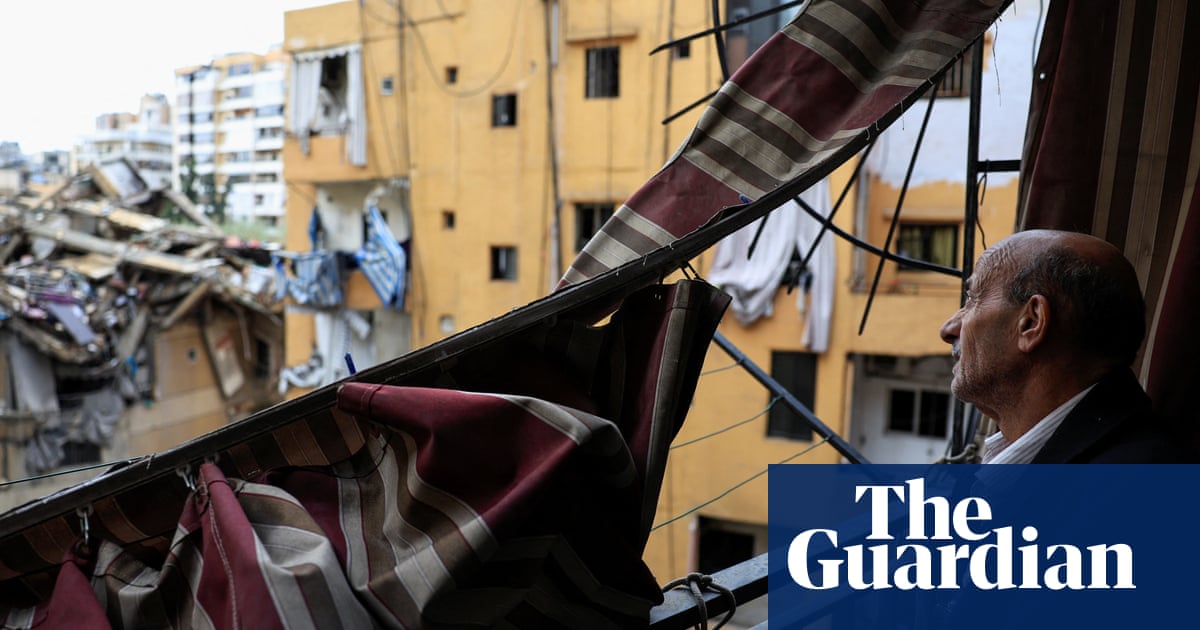Thousands of people displaced from war-torn southern Lebanon have begun returning home after a ceasefire between Israel and the Lebanese militia Hezbollah took effect on Wednesday, amid fears on both sides of the border about whether the truce would hold.
Israel heavily bombed the capital, Beirut, and the south of the country throughout Tuesday, killing 42 people, until the truce began at 4am local time, while Hezbollah fired rockets into Israel, triggering air raid sirens.
On Wednesday, Lebanon’s motorways were thronged with packed vehicles carrying families and their belongings returning south despite warnings from the Israeli military that they should stay away while its forces remained in the area. The Lebanese army asked displaced people to avoid frontline villages and towns near the UN-drawn “blue line” that separates the two countries.
In a sign of how volatile the situation remains, Israeli forces opened fire on a number of cars that attempted to enter what it said was a restricted area on Wednesday. It was not immediately clear if there were casualties in the incident. In televised remarks on Tuesday night, Israel’s prime minister, Benjamin Netanyahu, said that the country would “respond forcefully to any violation”.
The US-brokered ceasefire, the most significant development in the effort to calm regional tensions that have rocked the Middle East since the Palestinian militant group Hamas attacked Israel on 7 October 2023, has largely been welcomed by the war-weary Lebanese and Israelis.
Hezbollah began firing on Israel a day after its ally’s surprise assault, and the sides traded fire for a year before Israel stepped up its air campaign in late September and sent in ground troops. The deal is not linked to a ceasefire in Gaza – a previous Hezbollah demand.
The 60-day staged withdrawal, in which Israel will pull out of southern Lebanon and Hezbollah will move its fighters and heavy weaponry north of the Litani River, about 16 miles (25km) north of the frontier, is designed to broker a permanent end to 14 months of fighting. It will be monitored by a US-led supervisory mechanism that will mediate on infringements.
Predictably, both Hezbollah and Israel are seeking to portray themselves as the victorious side as the violence ends. The Lebanese group has suffered its worst losses since the group was formed to fight Israel’s occupation of Lebanon in the 1980s: much of its leadership has been wiped out and its communication networks and security protocols are compromised.
It is unclear how much heavy weaponry and military infrastructure has been destroyed, but the group’s inability to cause significant damage with rocket strikes on Israeli cities suggests its military capabilities are severely degraded.
Hezbollah, which participates in Lebanon’s political system but is considered a terrorist organisation by many western states, participated in the talks for the truce via mediators but has not formally commented on the ceasefire.
To its supporters, however, the group’s survival is a win in itself. Street celebrations where people waved the its yellow and green flag and honked car horns were held across southern Beirut on Wednesday, and celebratory gunfire rang out in some neighbourhoods.
Iran, Hezbollah’s ally, welcomed the end of Israel’s “aggression” in Lebanon on Wednesday morning. In a statement, the foreign ministry spokesperson Esmaeil Baghaei stressed Iran’s “firm support for the Lebanese government, nation and resistance”.
In Israel, the ceasefire has met a more mixed reaction. On Tuesday night, Netanyahu said he had endorsed the deal after his cabinet approved it, despite opposition from his far-right allies. The country’s army relies heavily on reservists, units that are tired after over a year of fighting in Gaza and Lebanon and will welcome the break.
But rightwingers and residents of Israel’s north – where about 60,000 were displaced from their homes at the beginning of the conflict – have criticised the agreement, which relies on the western-backed Lebanese army and UN peacekeeping troops to ensure Hezbollah does not redeploy to the border buffer zone. Dozens of people gathered outside the Israeli army’s headquarters in Tel Aviv on Tuesday night to protest against the ceasefire, blocking traffic on a motorway.
It is unclear how many displaced Israelis are now planning to go home. Gabby Neeman, the mayor of the northern town of Shlomi, told Israel’s army radio station that no residents were planning to return, and that he believed that the fighting would restart eventually.
“Everything we were shown testifies to the fact that the next round is ahead of us, whether in a month, two months or 10 years,” he said.
The Lebanon deal will not have any direct impact on the fighting in Gaza, where US efforts to broker a ceasefire between Israel and Hamas have repeatedly failed. Overnight on Wednesday, Israeli strikes on two schools turned shelters in Gaza City killed 11 people, including four children, according to hospital officials. Israel said one of the strikes targeted a Hamas sniper and the other targeted militants hiding among civilians.
Qatar, a key mediator between Israel and Hamas, announced earlier this month it was quitting its role until both parties showed “willingness and seriousness” in the talks.
Announcing the Lebanon ceasefire on Tuesday night, the US president, Joe Biden, said his administration would now push to renew ceasefire talks in Gaza, but the delinking of the two fronts is likely to strengthen Israel’s hand in the Palestinian territory.

